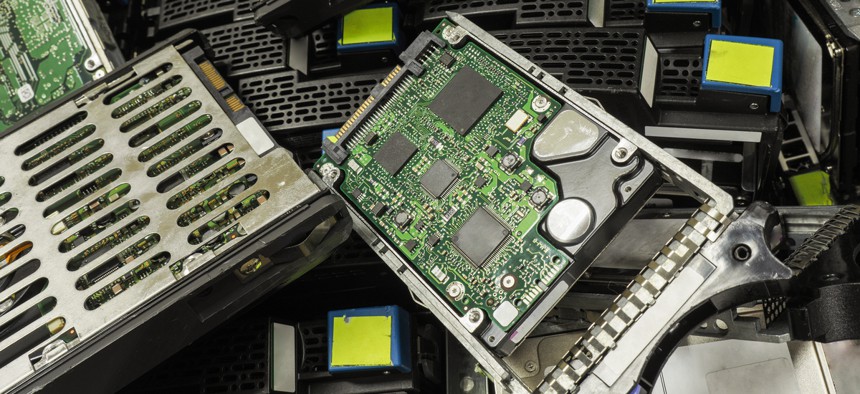The Navy Needs 2 Tons of Storage Devices Burned to Ash

KG Design/Shutterstock.com
Researchers at the Naval Surface Warfare Center have a lot of classified information stored on digital devices and issued a solicitation to literally watch it all burn.
The Naval Surface Warfare Center at the White Sands Missile Range in New Mexico has—literally—tons of IT hardware and equipment used for classified programs that need to be destroyed by the most secure and irreversible means.
While White Sands Missile Range is an Army facility, NAVSEA researchers have a detachment there working on “land-based weapons system testing, directed energy weapons testing”—lasers—"and research rocket launch support,” according to their webpage. Those researchers have on hand some 4,000 pounds of IT equipment, including magnetic, optical and solid-state storage devices with highly sensitive, classified data.
The center issued a solicitation for destruction services that specifically calls for all designated equipment to be burned “to ash.”
The information stored on these devices is highly sensitive, as evidenced by the physical security requirements set forth in the solicitation. The incineration facility must have “at the minimum, secure entry, 24-hour armed guards and 24/7 camera surveillance with recordable date and time capabilities.”
Due to the sensitive nature of the data, only federal employees are allowed to transport the equipment and government representatives will remain on site during the destruction process. For logistical reasons, contracting officers are restricting eligible awardees to those with facilities within 10 driving hours of the White Sands Missile Range.
Once the contract is awarded, the winning vendor will have 10 days to start the incineration work, which the center expects will take no more than eight to 10 hours. NAVSEA contracting officials expect all the work to be completed and the contract closed out by Sept. 30.
Interested companies should submit bids by email in PDF form by 3 p.m. Feb. 8.
Editor's note: The original FedBizOpps link no longer works so we removed it from our story after publication.
NEXT STORY: Red team hackers crack MHS Genesis






